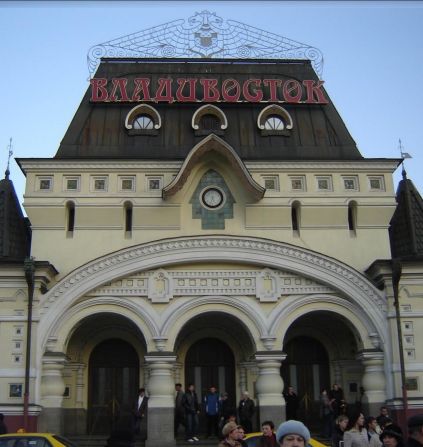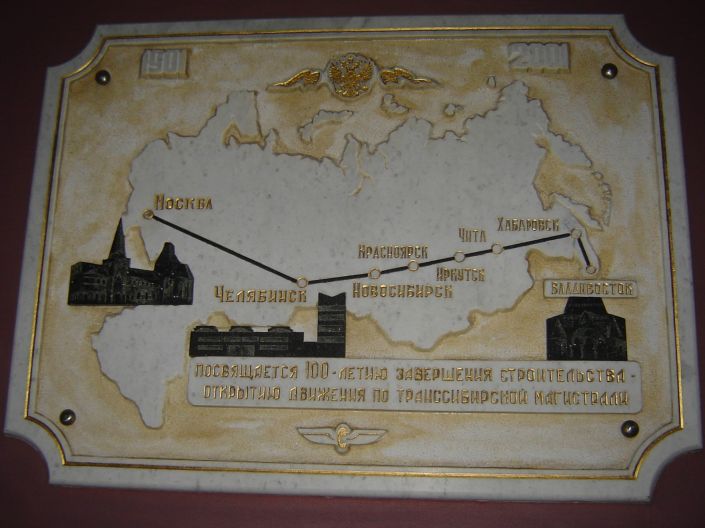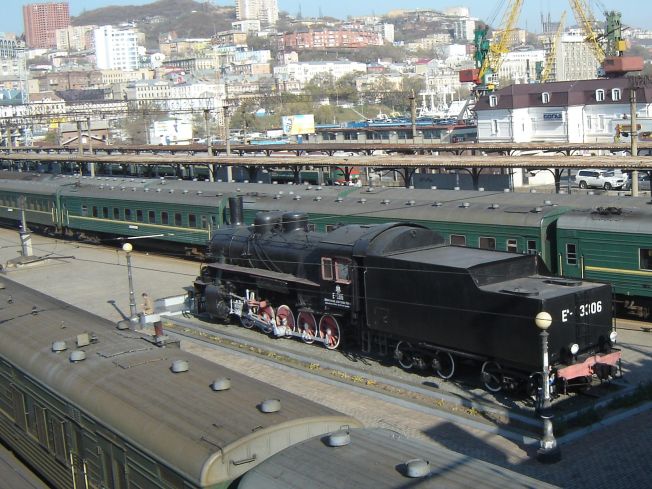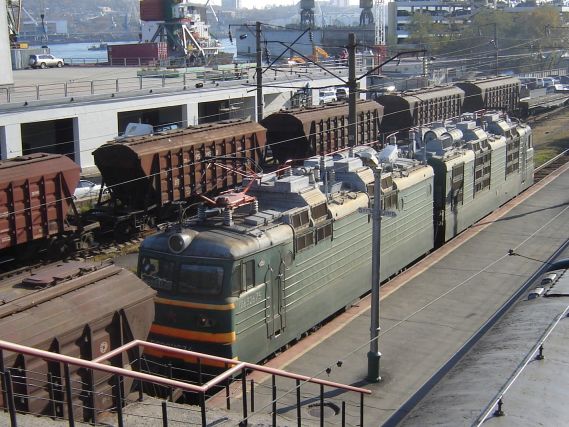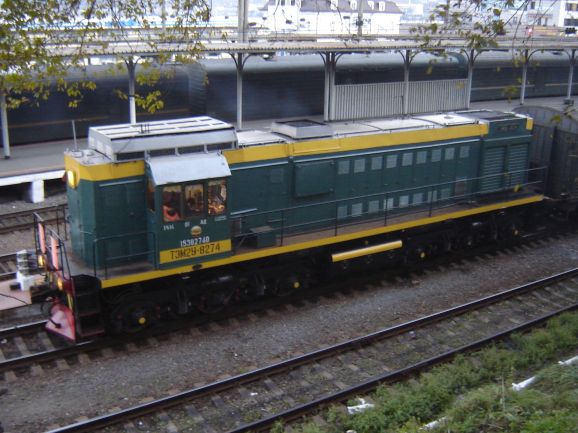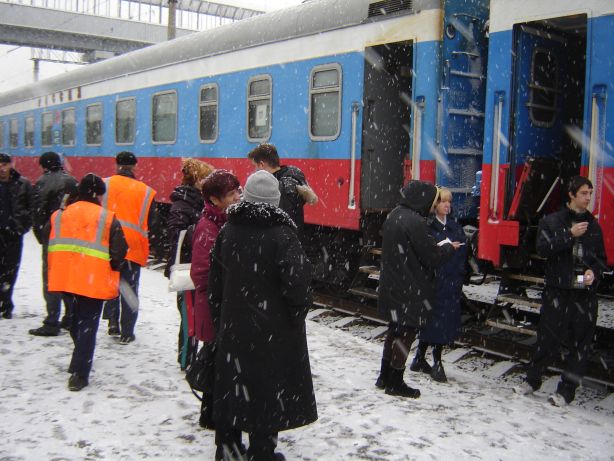
The Far East
Vladivostok to Birobidzhan
Russia is a land of mystery and intrigue that to most people is an unknown place, with only visions of drab utilitarian towns, vast steppes, boreal forests, lakes and frozen tundra. Until recently much of Siberia, a vast area of Russia, was off limits to foreign visitors. Linking all together like a steel thread is the Trans-Siberian Railway stretching its silver rails across the country.
In 2007 I had the opportunity to undertake this magnificent journey, which provided a unique chance to experience both the scenery and culture. I was working in South Korea and had to visit the UK. With my travel agent, I had explored the possibility of travelling all the way from Seoul by rail, despite local hype regarding rail travel across North Korea, it was clear that this was not feasible. The solution was to board a plane for Vladivostok from Seoul on 30 October 2007.
The formalities to enter Russia seemed less onerous than entering the USA, with our Passport and Visa quickly checked, then we were in Russia. While my wife Mary can read Cyrillic, she doesn’t speak Russian, and there being no obvious public ground transportation and she could see no signs for taxis, or buses, so the first hurdle was getting to Vladivostok thirty five kilometers away, so what could we do? Luckily a sort of unofficial Uber was operating and we soon got a shared ride with an airport employee heading off shift, and were dropped off at the main station, this was located downtown and next to the harbour located on the “Golden Horn”. I was immediately struck by the fact that this was a European city, everywhere else in Asia the cities are different, but Vladivostok could have been in central Europe. I am told that it is known as “Europe in Asia”. Also, almost all the road vehicles appeared to have come from elsewhere – we saw vehicles with Korean symbols and many with right hand drive, probably from Japan.
We collected our tickets from the local agent and were then free to explore. First stop was the station as we needed to understand where we would catch our train. This, unlike China and contrary to my expectations, was totally open, one could walk around at will, and take photographs. Proudly displayed on the platform was a typical feature of principal Russian stations, a preserved steam locomotive: in this case American-built from World War 2. The station was busy with long distance and local passenger trains as well as passing freight trains. Prominent was a kilometre post bearing 9289 – the distance to Moscow. While the Vladivostok to Moscow is not the longest possible train journey in the world (it is Moscow to Pyongyang at 10,267 km and operated bi-monthly; but currently suspended) it is the longest regularly scheduled journey that can be made. After we had absorbed the sights of the station we went outside, as on the ride from the airport, we had noticed a rather decrepit streetcar system and spent some time looking at the track and wondering how anyone could think it was safe to use. It is no surprise to me to discover that the system was closed in 2010. We also explored the general area which afforded up close views of what was presumably the Russian Pacific Fleet. Vladivostok had been a closed military area, but at the time the cold war seemed a long time ago, and no-one appeared to care what we could see.
To our relief, the station dining room had a menu with an English section, so we dined there; the food was very good. Following our meal, train boarding time was approaching so we reported to our train, which was train 1 of the Russian Railways (RDZ). Unlike Canada where the transcontinental runs on select days and is essentially a tourist ride, the Trans-Siberian trains are working trains running daily and in fact several trains depart each day, the variations are both in route and frequency of stops.
After we had identified our car and compartment with the help of fellow passengers, we settled in. We were allocated a separate compartment with comfortable long seats each side which were also the “beds”, there was a table and plenty of space for our baggage. Russia has a very generous load gauge, so the seats were full length and, actually, there were drop down berths above to accommodate up to six people in total comfort. It was now dark, we concentrated on meeting the two car attendants who would work all the way to Moscow, and learn from them the car’s facilities. The toilet was basic and lacked a shower, but the car was equipped with a Samovar (an Asian design tea urn where the tea is held in one container surrounded by hot water) in order to provide endless cups of tea. One curious feature of the train schedule displayed at the end of the car was that everything is given in Moscow time – but, in Vladivostok, we were seven time zones ahead of Moscow. Departure was prompt and accompanied by Martial Music, so we settled down to our first night’s sleep.
We awoke the next morning as we were approaching Khabarovsk (8493 km). We had been heading north all night skirting the eastern edge of China and as a result it was much colder with everywhere covered in snow. As we ran into the urban area, we were struck by how drab and utilitarian everything was, much as we had expected. The railway yards were vast and we passed an amazing monument – the entire front end of a steam locomotive attached to a wall and I managed a grab shot.
As we arrived at the Khabarovsk station, the attendant referred to the schedule and showed us what time we had to be back on board, in good time for departure. We were free to get off and walk around, so we decided to head down to see our train’s locomotive, but when we got there, the locomotive was a dot in the distance while a new locomotive was being attached, was there a problem, we wondered? We discovered the reason later in the journey. As it was cold, we soon returned to the warmth of the compartment, where breakfast was served to us, as we had arranged a full service meal package.
Departure was prompt, the schedule is not onerous and we “kept time” for most of the trip. Soon after departure, we crossed the River Amur on a vast bridge and turned west heading into Siberia proper. After about two hours we arrived at the Town of Birobidzhan, km post 8312, named after the two rivers on its borders – the Biro and the Bidzhan. What makes this town unusual is that it is a Jewish State predating Israel, and the official language is not Russian but Yiddish. The train made a brief stop, so we had to remain on board. Leaving Birbidzhan, we headed into the real wilderness – no large towns for nearly 2,200km.
